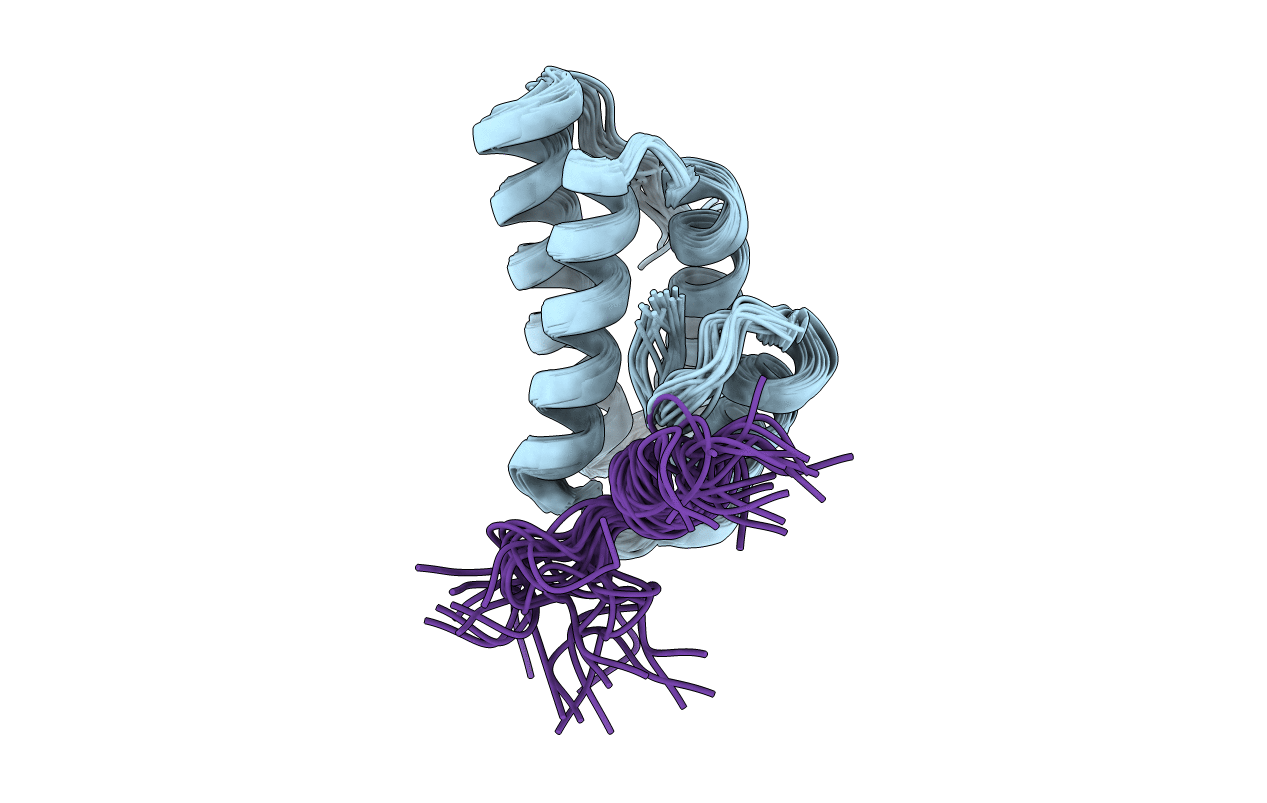
Deposition Date
2015-04-01
Release Date
2016-04-13
Last Version Date
2024-05-01
Entry Detail
PDB ID:
2N1G
Keywords:
Title:
Structure of C-terminal domain of human polymerase Rev1 in complex with PolD3 RIR-motif
Biological Source:
Source Organism:
Homo sapiens (Taxon ID: 9606)
Host Organism:
Method Details:
Experimental Method:
Conformers Calculated:
200
Conformers Submitted:
20
Selection Criteria:
structures with the least restraint violations


